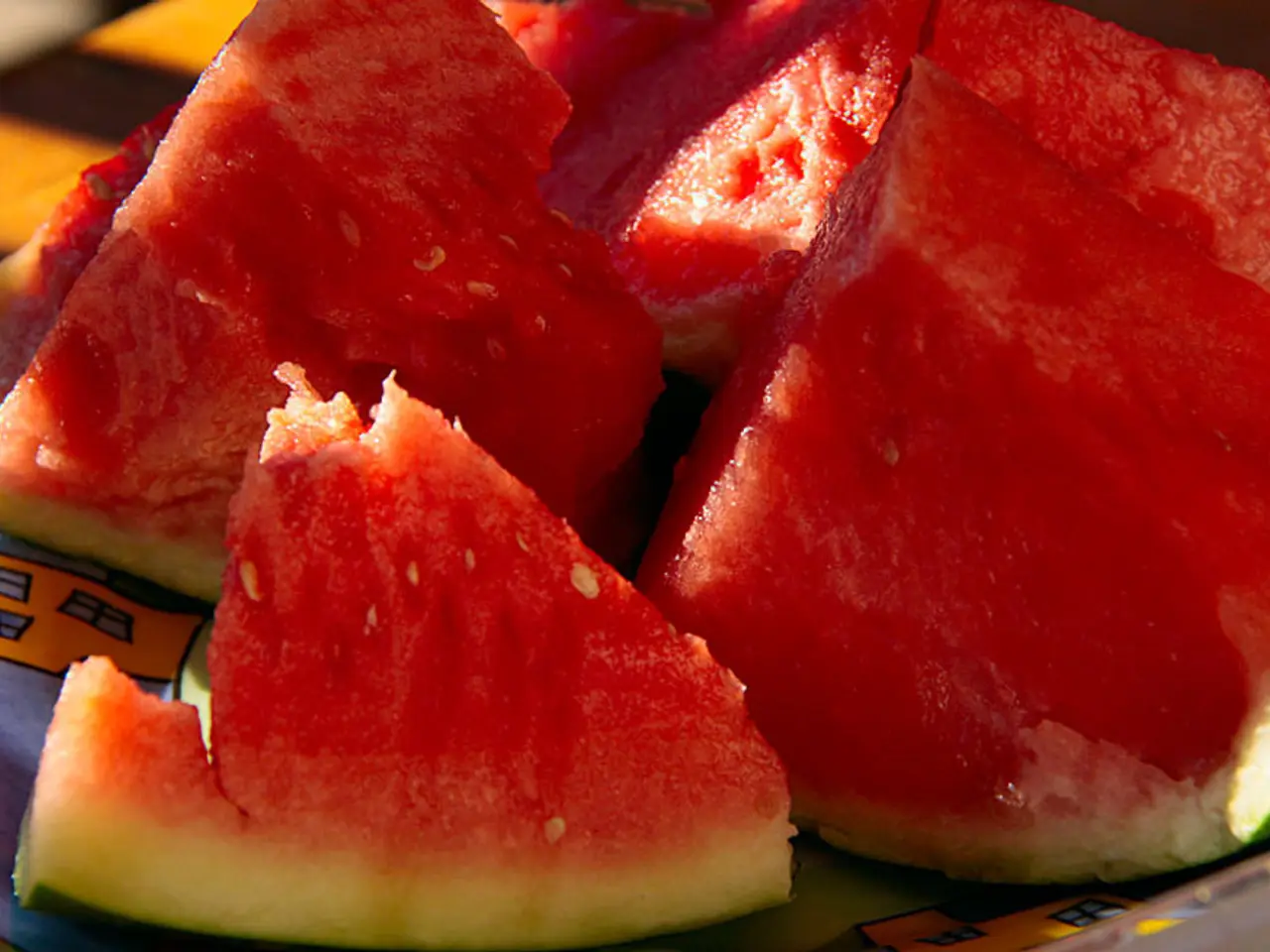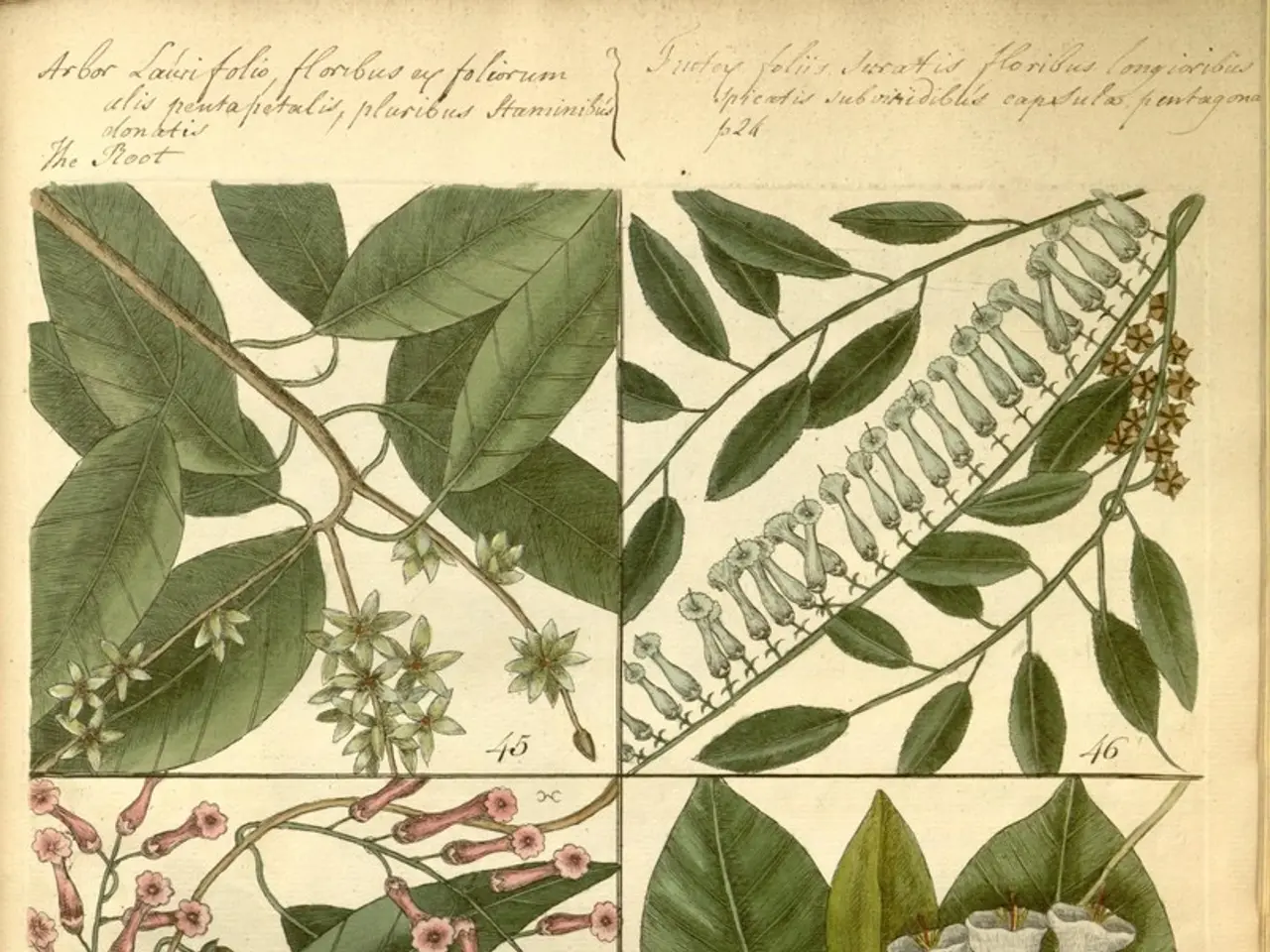Picking the most succulent and sweet watermelon? All you require is your finger.
In the peak season for watermelons, from mid-August to late September, selecting the perfect fruit can be a delightful experience. Here's a comprehensive guide to help you choose a ripe and sweet watermelon, focusing on the lesser-known method of scratching its rind and combining it with other indicators.
The traditional method of testing watermelon ripeness involves looking for signs such as a dry tail, bright yellow patch, and hollow sound. However, these methods are not always reliable. A more accurate approach is to combine the scratch test with other factors for the best results.
Scratching a watermelon's rind with your fingernail can be a useful method to help determine ripeness. A naturally ripe watermelon’s rind can be scratched easily with a fingernail, indicating the rind has softened appropriately as the fruit matured. Additionally, when scratched, a greenish-white color just beneath the outer rind generally suggests that the melon is ripe.
However, it is important to combine this test with other factors for best results. Look for a dried, brown stem or tendril near the melon’s attachment point, which indicates full ripeness. Check for a yellow field spot on the underside of the melon (where it rested on the ground)—a creamy yellow spot means the melon is ripe, white or pale green means it is underripe.
Test the weight—the heavier the melon for its size, the juicier and sweeter it tends to be. An appropriately ripe melon also often has a dull, not shiny, sheen on its skin.
Scratching the rind only tells you about the surface firmness and slight texture; it does not directly measure sweetness but is correlated with ripeness, which in turn often means the melon is sweeter. Therefore, scratching the rind is an effective preliminary check but should be used alongside sound, field spot color, stem dryness, weight, and overall firmness to reliably select a ripe and sweet watermelon.
In summary:
| Indicator | What it suggests about ripeness/sweetness | |-------------------------------|--------------------------------------------------------------| | Easy to scratch rind | Ripe rind, likely mature fruit | | Greenish-white under rind | Ripe watermelon | | Dried brown stem/tendril | Fully ripened and sweet | | Yellow field spot on bottom | Ripened on ground, ripe and sweet | | Heavy for size | Juicier and sweeter | | Dull skin color | More ripe, less shiny, mature fruit |
Remember, if a watermelon is too large, the flesh may be watery, and if it's too small, it might be unripe. A whitish or greenish yellow patch on the watermelon indicates it may not be ripe. If the rind is firm and does not indent with significant pressure, the watermelon is likely ripe and has juicy and sweet flesh. If the rind indents easily, the watermelon is likely unripe and may have watery, pale, or not sweet enough flesh.
With this guide, you're now well-equipped to make an informed choice when selecting a ripe and sweet watermelon during the ongoing season. Enjoy the juicy, refreshing taste of a perfectly ripe watermelon!
[1] Melon Growers of California. (n.d.). How to Pick a Watermelon. Retrieved from https://www.california-melons.org/farm-to-table/how-to-pick-watermelon/ [2] National Watermelon Promotion Board. (2021). How to Select a Watermelon. Retrieved from https://www.watermelon.org/select-watermelon/ [4] National Watermelon Promotion Board. (2021). How to Cut a Watermelon. Retrieved from https://www.watermelon.org/cut-watermelon/
- The scratch test for watermelon ripeness, when combined with the presence of a dried brown stem or tendril and a yellow field spot on the bottom, improves the reliability of selecting a ripe and sweet watermelon.
- A watermelon with heavy weight for its size usually has juicier and sweeter flesh, whereas a smaller one might be unripe.
- Checking the rind's firmness and noticing an easy scratchability, as well as a greenish-white color under the rind, can be a preliminary and effective method for determining ripeness.
- A watermelon's rind that does not indent with significant pressure often means it is ripe and has juicy and sweet flesh, while one that indents easily may be unripe and have watery, pale, or not sweet enough flesh.




